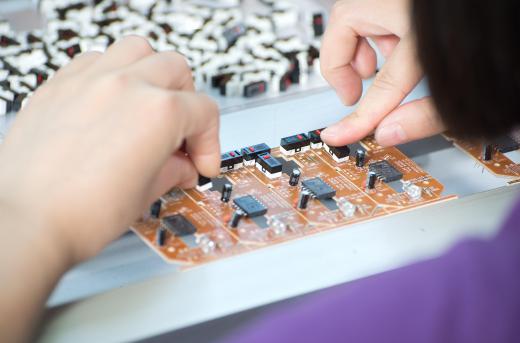Breadboards are types of circuit boards that are constructed by hand. Sometimes referred to as a protoboard, the breadboard is often used to create prototypes for new configurations of circuit boards that are intended for general use, or for proprietary use in a specific brand of electronic product. It is not unusual for these prototypes to be assembled without the use of soldering, a factor that has led to boards of this kind being referred to as plugboards or solderless breadboards.
There are several advantages associated with the breadboard, especially during the process of creating a prototype for a new product. First, since the components of the board are not soldered, it is a simple task to reposition or remove some component from the design, if desired. The components used in the prototype can also be utilized later in the research process for other circuit board designs, a benefit that helps to keep the cost of research materials to a minimum.

Once a breadboard design is considered complete, the prototype then serves as the model for the creation of what is known as a veroboard, or printed circuit board. This type of board is soldered, which means that the components cannot be reused with ease, and changes to the design of the board are difficult, if not impossible. By creating a breadboard first, and using that device for testing, it is possible to perfect the design before creating the actual prototype that is used in manufacturing the circuit boards. This process actually helps to cut the costs of creating the boards that ultimately are used in everything from central processing units on mainframe computers to the circuit boards used in laptops and similar devices.
While a breadboard is a versatile tool, a basic pattern has emerged. Boards of this type normally use a layout that is composed of two specific areas on the facing. These areas are known as strips. Those strips will include a series of terminals that are capable of interacting with relative ease. With most basic designs, there is also a notch in the middle area of each strip. This notch serves a purpose in helping to keep the board cool during the flow of current through the components, a simple but effective safety measure.
In order to facilitate the creation process, there are sets of jump wires manufactured for use with breadboard designing. It is also possible to construct these jump wires manually, but this process tends to be somewhat cumbersome in terms of the amount of time required for the task. Many researchers prefer to use the mass-produced jump wire sets, allowing them to spend more time testing the function of a particular breadboard design, and making any changes required to achieve the ideal level of functionality.

